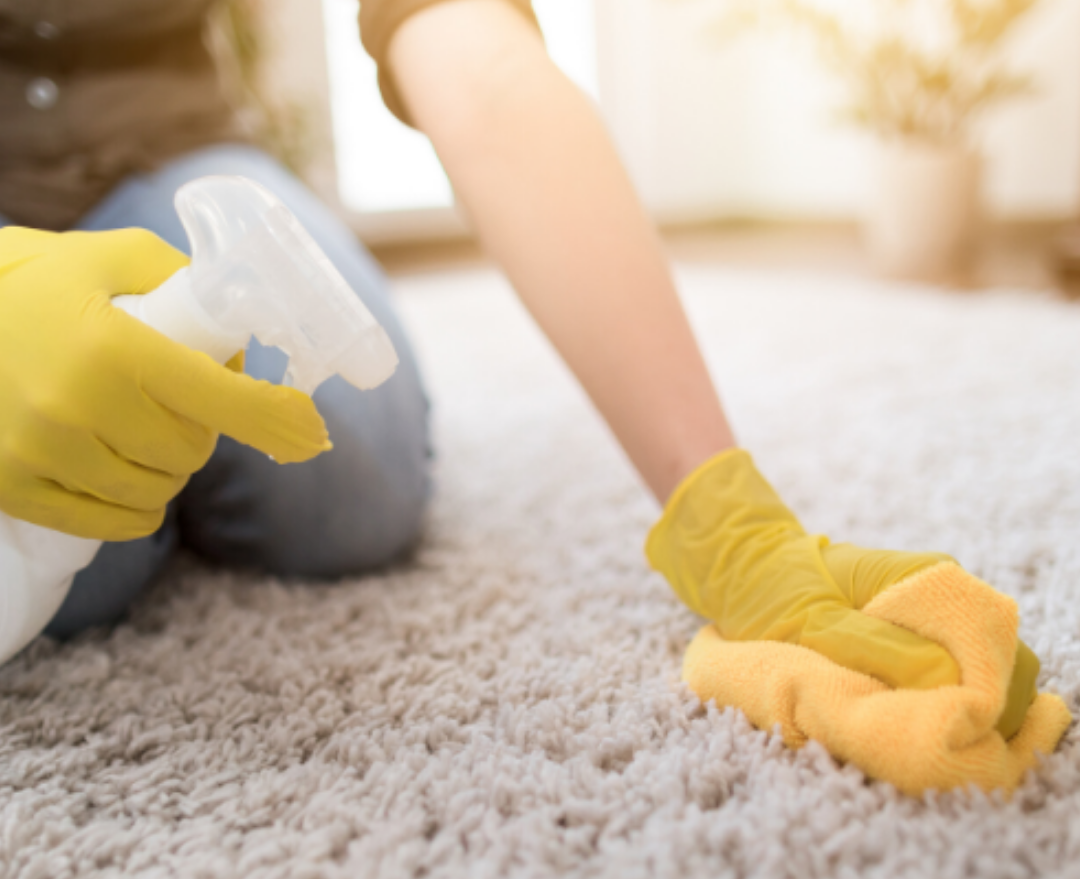As a professional carpet cleaner with over 15 years of experience, I’ve seen my fair share of mold and mildew growth in carpets. Mold can occur anywhere there is excessive moisture – like bathrooms, basements and rooms with humidity issues. If left unchecked, mold spores multiply quickly and can cause costly damage to carpet fibers and backing.
The good news is mold can be safely removed from carpet with the right products and techniques. In this comprehensive guide, I’ll share my proven process for eliminating mold from carpets.
You’ll learn:
- How mold develops and spreads in carpet
- Must-have products for DIY mold removal
- Step-by-step instructions for treatment
- When to call in the pros
- Tips for preventing future mold growth
I’ll also include before and after photos of real mold removal projects completed by my carpet cleaning company so you can see these methods in action.
How Mold Develops and Spreads in Carpet
Mold spores occur naturally in the air we breathe. When excess moisture gets trapped in carpet fibers and backing, it creates the perfect environment for mold to thrive.
[How Mold Spreads in Carpet]
- Spores land on damp carpet and germinate
- Grows on cellulose material in fibers
- Spreads under carpet surface over time
- Becomes visible as staining and discoloration
Mold can develop undetected under the carpet surface for weeks before any visible signs appear. That musty odor or strange staining you notice means the mold is already well-established.
DIY Products to Remove Mold from Carpet
Having the right products makes mold removal much easier. Here are the must-have items for your cleaning kit:
- Protective gear – gloves, masks, goggles for safety
- Stiff brush – for scrubbing moldy fibers
- White vinegar – breaks down mold walls
- Baking soda – deodorizes and absorbs moisture
- Hydrogen peroxide – disinfects and kills mold
- Dish soap – emulsifies mold and oils
- Table salt – absorbs moisture to dry carpet
- Fans or dehumidifier – speeds drying process
Avoid using bleach or ammonia – they can create toxic fumes when mixed with the acids in vinegar or peroxide.
Now let’s get into the step-by-step process…
10 Steps for DIY Mold Removal from Carpet
Follow my proven techniques to banish mold from your carpets:
1. Protect Yourself
- Wear gloves, masks and goggles during cleaning to avoid contact or inhalation. Mold spores and cleaning chemicals can be hazardous.
2. Dry and Ventilate
- Open windows, run fans or a dehumidifier. Lowering moisture discourages further mold growth.
3. Vacuum Thoroughly
- Use HEPA filter vacuum to remove surface mold and lift carpet pile. Avoid spreading spores.
4. Apply DIY Mold Killer
- Spray vinegar, peroxide or non-toxic mold remover according to product instructions.
5. Let Dwell 5-10 Minutes
- Allows solutions time to kill mold spores and break down growth.
6. Scrub with Stiff Brush
- Gently loosen mold debris from carpet fibers and backing.
7. Blot Stain with Towels
- Dry carpet to remove moisture and cleaning product residues.
8. Sprinkle Baking Soda
- Helps deodorize carpet and absorb any remaining moisture overnight.
9. Vacuum Baking Soda
- Lifts away dead spores and prevents mold from returning.
10. Speed Dry Process
- Point fans directly on damp areas to fully dry carpet and prevent recurrence.
Be sure to rinse cleaned areas with plain water to remove any residue that could attract soil. Repeat the process as needed until mold is eliminated.
Call Professionals for Serious Mold Issues
While surface mold can often be treated DIY, there are times to call the pros:
- Large areas of heavy mold growth
- Mold that has spread to carpet backing and pad
- Musty odor persists after cleaning
- Mold returns despite treatment
- Underlying moisture issue requires repairs
Serious mold growth requires commercial grade steamers, vacuums and antimicrobials to fully penetrate and extract spores. Don’t hesitate to call a professional carpet cleaner like my company.
6 Tips to Prevent Mold Growth
Prevention is key to keeping mold out of your carpets:
- Act quickly when you notice moisture or damp spots
- Keep humidity below 50% with dehumidifiers or A/C
- Improve airflow and ventilation
- Clean spills right away before moisture penetrates
- Dry carpet thoroughly after steam cleaning
- Vacuum and deep clean carpets regularly
